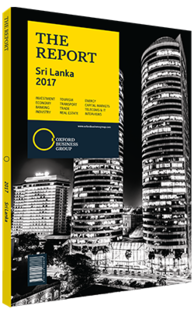New measures in Sri Lanka aim to bolster textiles and garments
As the country’s largest export sector, the garment and textiles industry maintains high ethical standards and a recognised record of respectable labour practices. In this, the apparel sector caters to largely higher-value, niche products. Indeed, Sri Lanka’s major textiles producers such as MAS Fabrics serve some of the best-known apparel brands in the world. Nike, GAP, H&M and Marks & Spencer are just some of the major international chains active in the country.
Supply & Demand
To boost exports, the Sri Lanka Exports Development Board in concert with the industry is focusing its efforts on becoming the supplier for international apparel retailers that are not sourced from Sri Lanka. As this unfolds, it will likely be taking market share from its neighbours. Sri Lanka ranks third after Bangladesh and India in terms of apparel exports ($4.4bn) and global market share (1.2%). But it will have to contend with relatively high labour costs at home that drive up apparel prices in comparison to its competitors, according to World Bank benchmarking, as well as improve industrial lead times, product range and availability. According to the Institute of Policy Studies, the apparel industry was Sri Lanka’s second-largest foreign exchange earner, with exports totalling $4.8bn and 46% of the country’s total exports in 2015. The US, UK, Italy, Germany, Belgium and France were the major export markets for textiles and garments.
In 2015 exports to the EU dropped by 12.5%, while the US became Sri Lanka’s largest market for garment exports in 2015, accounting for 46.3% of total garment exports that year. During the first half of 2016 the industry’s exports rebounded, growing at 4.5%, according to the Institute of Policy Studies.
The apparel industry is aiming to record an additional $1bn in turnover by 2019 by catering to the three of the world’s largest economies: India, China and the EU. For the latter, regaining Generalised System of Preferences Plus status, which Sri Lanka achieved in May 2017, will be helpful. “We are entering three huge consumer markets with [the] EU, India and China, and this will help us increase our export revenue to $6bn in 2019 from $4.7bn this year,” Tuly Cooray, secretary general of the Joint Apparel Association Forum, told local media in October 2016.
Duty Free
Efficient import regimes are critical for export competitiveness, and Sri Lanka has made considerable progress in this area. With no import duties on textiles, Sri Lanka’s apparel industry has no trade barrier issues to contend with, unlike its competitors. This lack of trade barriers is one of the main reasons Sri Lanka is able to export 10 times more apparel than India and Pakistan – countries where duty-drawback schemes present exporters with obstacles to importing textiles, according to the World Bank.
Sri Lanka’s 2017 budget included several benefits for the segment. The government proposed that garment exporters be granted permission to import branded products for reworking. These would then be exported to countries with no preferential treatment. The government said it would also allow apparel firms to invest in overseas entities involved in apparel design and to manufacture up to 5% of their average export turnover of the preceding three years in any given year, with the profits and income of such businesses established overseas received by the investing company in Sri Lanka.
Cluster
The government also proposed the formation by the private sector of a textile cluster to include sizing, dyeing and finishing units. Although 2015 saw the apparel and textile industry export products worth $4.8bn, it also imported fabrics worth $2.3bn. With foreign exchange reserves dipping, priority is being given to projects that staunch the outflow of payments. The government thus called for the introduction of backward integration to the textile industry, with a promise to support the formation of a textile cluster by providing investment relief to businesses investing in this venture. The savings from this backward integration were estimated to be nearly $2bn per year.
You have reached the limit of premium articles you can view for free.
Choose from the options below to purchase print or digital editions of our Reports. You can also purchase a website subscription giving you unlimited access to all of our Reports online for 12 months.
If you have already purchased this Report or have a website subscription, please login to continue.

